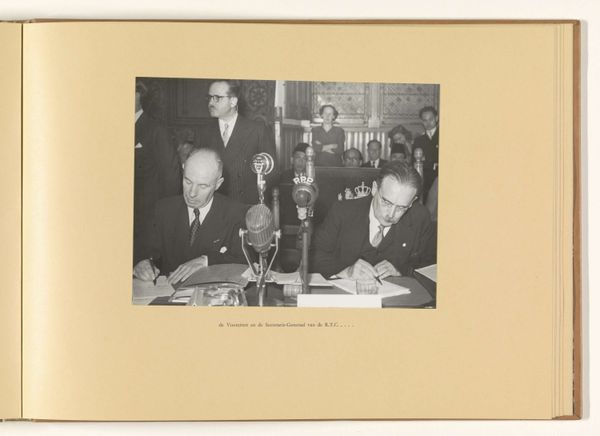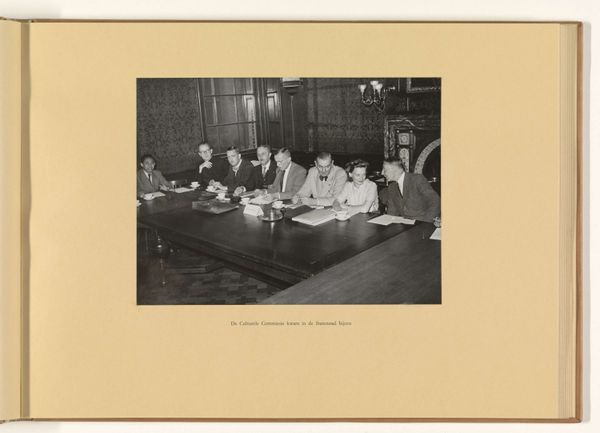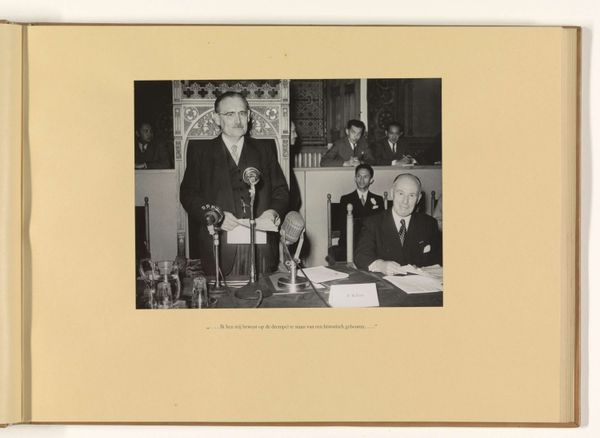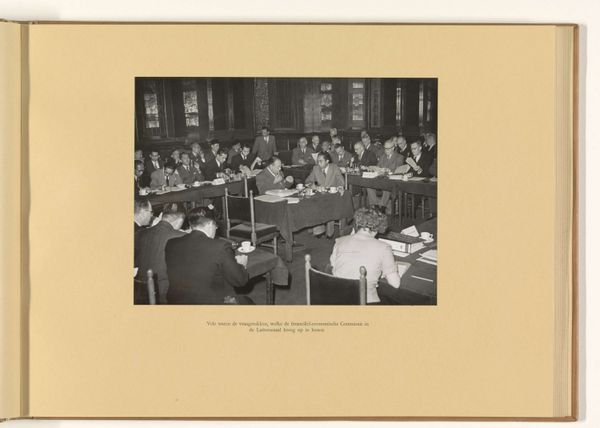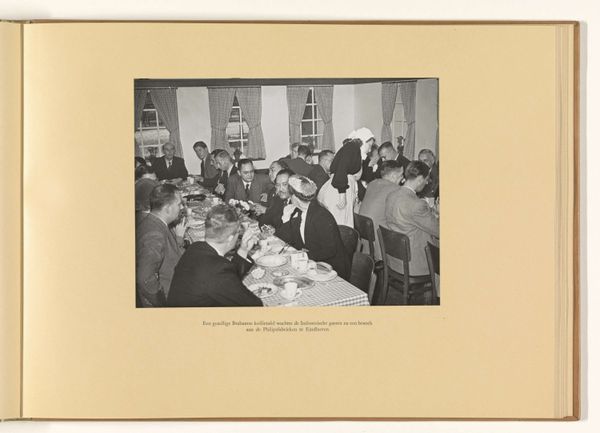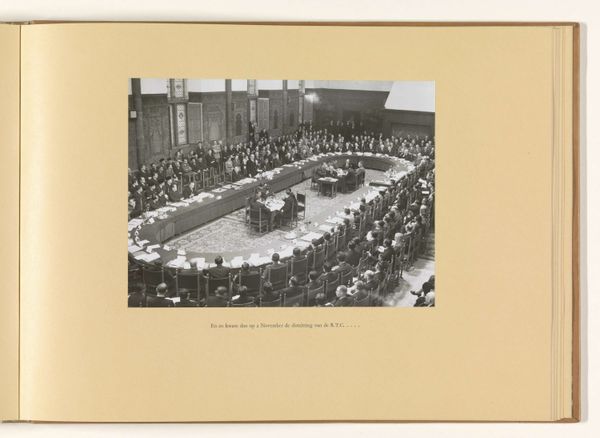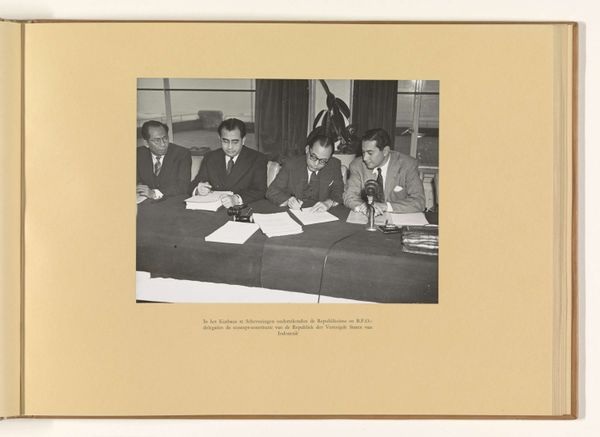
.... die stuk voor stuk door de voorzitters van de Nederlandse en Indonesische delegaties .... Possibly 1949
0:00
0:00
print, photography, gelatin-silver-print
#
dutch-golden-age
# print
#
photography
#
group-portraits
#
gelatin-silver-print
#
history-painting
Dimensions: height 170 mm, width 226 mm, height 292 mm, width 400 mm
Copyright: Rijks Museum: Open Domain
Editor: This gelatin-silver print, titled ".... die stuk voor stuk door de voorzitters van de Nederlandse en Indonesische delegaties ....", is possibly from 1949, attributed to Regeringsvoorlichtingsdienst. It's a stark image, almost like a historical record frozen in time. What exactly do you see going on here? Curator: I see the culmination of specific material processes: the labor involved in producing the photographic print itself, from the mining of silver for the emulsion to the development chemicals and printing process. These aren't just neutral materials, are they? The production of these resources and the dissemination of the final image also reveal power dynamics embedded in the image’s creation and distribution related to the Dutch colonial enterprise. Editor: So you're saying the very materials themselves are politically charged? How so? Curator: Precisely. Silver, for instance, often comes from mines operating within exploitative labor systems. Furthermore, consider the technology involved – the cameras, the darkroom equipment. Access to and control over these tools signify technological dominance and colonial administration at that time. It forces us to question who had the means to document and disseminate this specific narrative. Editor: I never thought about it that way. I was so focused on the faces, the people, and the historical event itself. Curator: The image invites us to explore beyond just the subjects represented to interrogate the networks of production and circulation within which this photograph exists. Who consumes this image, and what implications do these actants elicit to a wider audience? Editor: This has opened up a totally different perspective on interpreting images for me. Considering the socio-economic circumstances of its creation is fascinating! Curator: Indeed. By understanding these aspects, the art serves as evidence to reveal larger dynamics happening within power relations, technological advances, and political negotiations that have helped to inform the past.
Comments
No comments
Be the first to comment and join the conversation on the ultimate creative platform.
